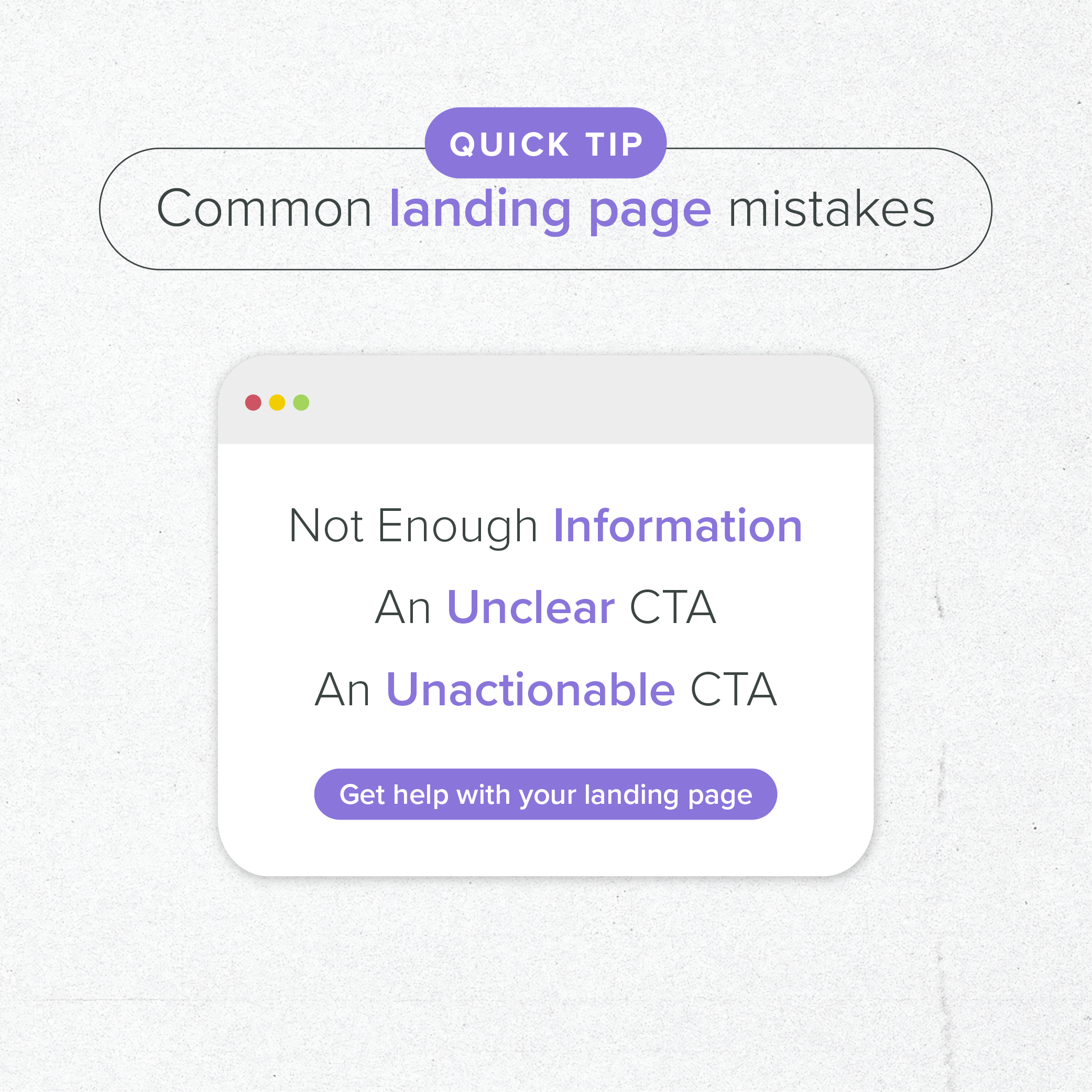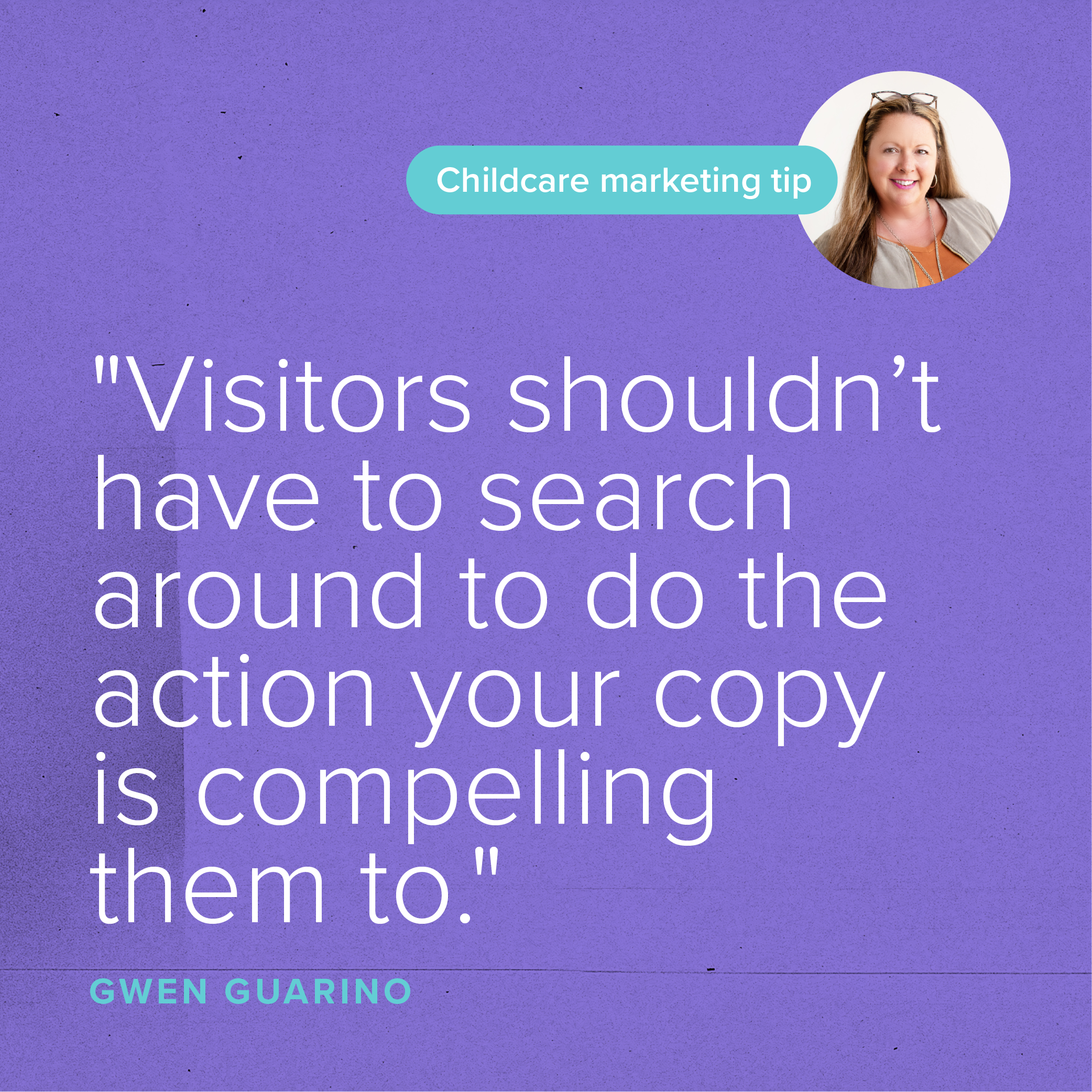As soon as someone clicks on your paid ad, they enter your marketing funnel. That’s great — as long as your funnel is well built.
Your marketing funnel is like a chain: it’s only as strong as its weakest link. If one link is inadequate, the entire chain will break, and you can kiss your leads goodbye.
So, if someone clicks on your paid ad, it proves your ad copy is effective — a strong first link in your chain! But then comes the next link: the landing page the ad directs people to.
It’s the landing page’s job to convert the user at least halfway to enrollment. The landing page can accomplish this by providing information specific to the ad copy and/or the reason the user clicked on the ad.
If the landing page doesn’t contain this information, the user will be confused and frustrated, and they’ll likely “bounce.” At that point, the funnel has failed.
So, what does the ideal landing page look like? Keep scrolling to find out.
Your Homepage Is NOT a Landing Page
A landing page serves a specific purpose: to provide the information a user is looking for when they click your ad. That’s a very specific set of information.
You may be tempted to direct traffic from a paid ad to your website’s homepage, but your homepage isn’t so specific. It has a different agenda and a lot of information that may or may not be pertinent to the ad the visitor clicked on, distracting and frustrating them.
For example, if someone clicks on an ad for a preschool program, the most effective landing page is one focused on that specific program. Your homepage may include some information about your preschool program, but it probably isn’t front and center, and it certainly won’t be the only thing on the page. Curricula, methodology, other programs, and more will muddy the water.
As internet users, our attention spans are short and our expectations are high. When we search for something, we expect to find it instantly. If we click on an ad only to wind up on a homepage where we have to search for relevant information, chances are we’ll leave to find what we need somewhere else.
Creating a dedicated landing page for your ad makes it easy for your visitors to find what they’re looking for. No confusion, no extra steps.
What Landing Pages Should You Use for Your Paid Ads?
Each ad needs its own landing page — don’t try to double up. It may seem overwhelming, but the benefits far outweigh the work involved.
You’ll need separate landing pages for different programs:
- Kindergarten
- Pre-kindergarten
- Preschool
- Before school
- After school
- Summer camp
And age groups:
- Toddlers
- Babies
- Infants
Each landing page is an opportunity for you to not only educate your prospective clients about the differences between your programs, but also to show off your knowledge and expertise. For example, articulating the difference between preschool and pre-kindergarten will give parents insight into your level of professionalism and establish you as an authoritative source.
Finally, specific landing pages allow you to follow up on each individual ad and give visitors all the information they need to take the next step down your marketing funnel, whether that’s booking a tour or calling to enroll.

Common Landing Page Mistakes
When it comes to designing landing pages for ads, certain mistakes will hurt conversions — and unfortunately, we see the same mistakes repeated over and over.
Fortunately, those mistakes are easy to fix.
Not Enough Information
It’s possible to design a targeted landing page that doesn’t provide much on its subject. Maybe it only contains bare-bones information and a call to action. Or maybe it looks more like a homepage, with a little information on the main topic along with loads of other subjects.
If I’m a parent and I click on an ad for a preschool program, I’m looking for some very specific information. I want to know how a preschool will benefit my child, what the curriculum is, and why this school is the best choice in my area. If that information isn’t on the page, then I’m left with a lot of questions that require more steps — which I might not take — to investigate.
Or maybe some of that information is on the page, but it’s buried among details about summer camp and toddler programs. This confuses and frustrates the user. I might look around for a minute, but it’s more likely I’ll bounce and look at the next search result.
Make sure the information on your landing page relates directly to your ad copy and answers all your target audience’s questions.
Put yourself in the parents’ shoes. If you clicked on that ad, what would your expectations be? If you can satisfy those expectations, your landing page will succeed.
Unclear CTA
If you have a great ad and a great landing page but no idea what you want your visitors to do once they get there, you’ll lose them along the marketing funnel.
That’s where a call to action (CTA) comes in. A CTA is an invitation to the user to take a clear next step — what you want a parent to do after visiting your landing page. Want them to schedule a tour? Call the office? Don’t make them guess.
If they’ve clicked on your ad, they’re in your marketing funnel. It’s up to you to guide them further on.
Unactionable CTA
Once you decide on a CTA and clarify it for your audience, lead them to action. Don’t assume they’ll go find your phone number or any necessary forms elsewhere on your website.
Forms should be present and clickable on the landing page. Want parents to schedule a tour? Include a big, bold link or button. Want them to call your school? Include your number in obvious, clickable text — not hidden in the header or footer of the landing page.
Visitors shouldn’t have to search around to do the action your copy is compelling them to.
Wrapping Up
There’s a direct relationship between your paid ad and landing page; they’re two links in a chain. Your ad copy may do a fantastic job, but your landing page has to bear weight as well. Offering your audience the specific answers they need will keep the chain strong and help your conversions, as will providing clear, actionable next steps for visitors.
If you’d like help with your landing page, or any part of your marketing funnel, give us a call. We’d be happy to help your business thrive.
To your success!

Subscribe
Sign up with your email address to receive news and updates.

